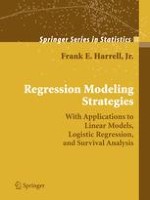Many texts are excellent sources of knowledge about individual statistical tools, but the art of data analysis is about choosing and using multiple tools. Instead of presenting isolated techniques, this text emphasizes problem solving strategies that address the many issues arising when developing multivariable models using real data and not standard textbook examples. It includes imputation methods for dealing with missing data effectively, methods for dealing with nonlinear relationships and for making the estimation of transformations a formal part of the modeling process, methods for dealing with "too many variables to analyze and not enough observations," and powerful model validation techniques based on the bootstrap. This text realistically deals with model uncertainty and its effects on inference to achieve "safe data mining".
